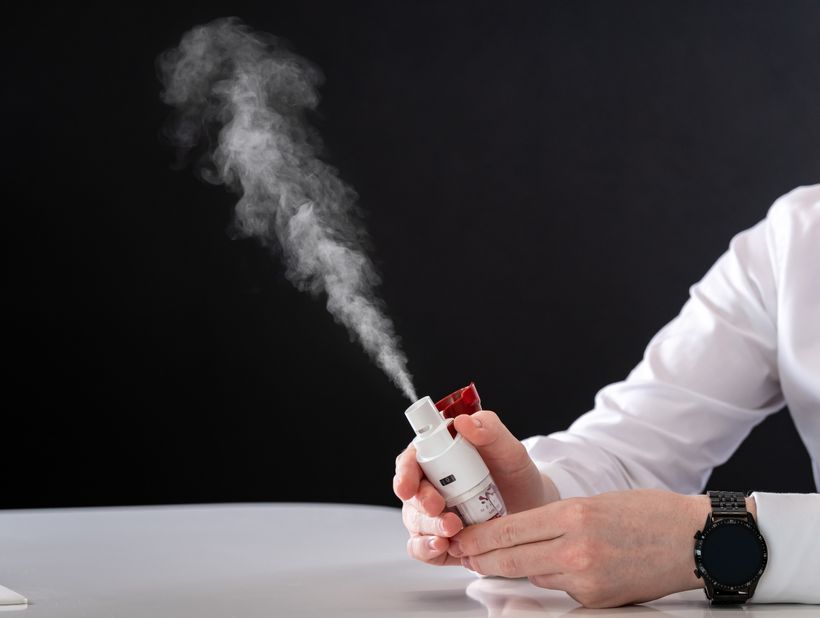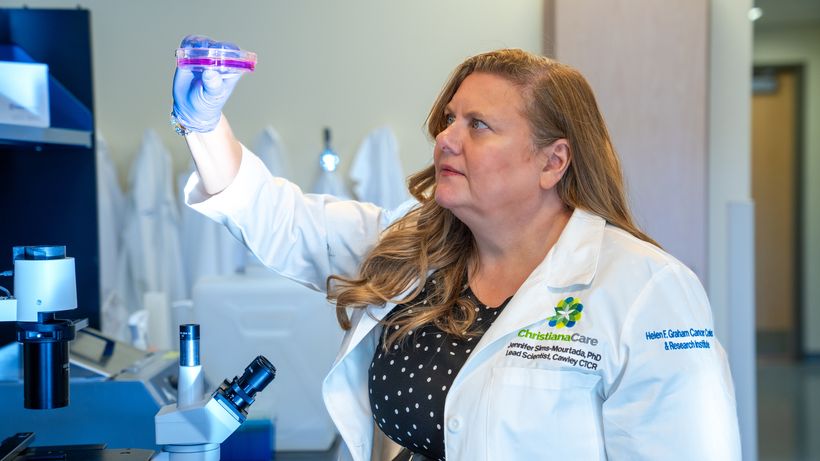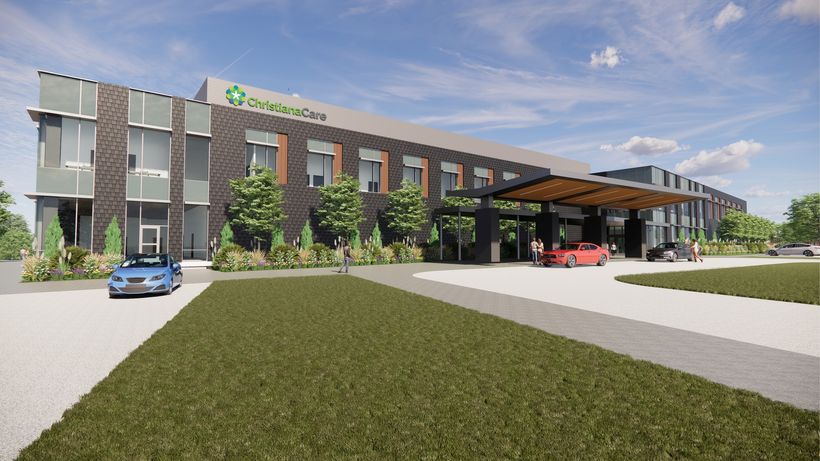Imagine a world where AI doesn’t just support health care providers, but anticipates their next move — detecting diseases faster than human eyes, analyzing patterns and patient data that humans might overlook and revolutionizing health care decision making at every level.
Driven by data, AI can identify which patients are most likely to have repeated emergency department visits or thrive from personalized medicine.
With the power of robotics enhanced by AI, people with medical needs can gain more independence, managing daily tasks such as taking medication, monitoring their health and receiving personalized care, all from the comfort of their own homes.
And this is just the beginning.
“AI is transforming – and is going to continue transforming – every industry, especially health care,” said Bharat Rao, a notable figure in the fields of health care, technology and AI.
Rao himself has made significant contributions to artificial intelligence, machine learning and data analytics, particularly in health care innovation. His current start-up, CareNostics, uses AI technology to identify patients at increased risk for chronic disease.
“We take this for granted,” he said, “but it’s like what I used to see on Star Trek as a kid. The opportunities are limitless.”
Rao was a keynote speaker at ChristianaCare’s inaugural Innovation Summit, a two-day conference at ChristianaCare’s Newark campus in Delaware, in fall 2024. During panel discussions and keynotes, more than 200 attendees heard about current and future health tech from national innovators and thought leaders, as well as technical advice for inventors who want to patent ideas and protect intellectual property in a world where “AI Is Everywhere,” the conference’s theme.
Speakers emphasized that it’s not just technologists, but also researchers, clinicians and other health care professionals who play an essential role in implementing AI-based health care solutions. “There’s no AI without HI, which is human intelligence,” said Catherine Burch, MS, CXA, CUA, vice president of innovation at ChristianaCare. “You want to help shape the future, not wait for it to shape you.”
How AI helps improve patient care
“AI is incredibly good at reducing noise in images,” said speaker David Lloyd, a technical leader at Amazon, who discussed the use of AI in radiology. “It can detect anomalies, and it can automate radiologist reports, which saves time for radiologists.”
Data informatics is another example of the power of AI to help health professionals determine which patients are at an increased risk for falls, malnutrition or recurrent asthma attacks, enabling them to optimize patient health and prevent hospitalizations.
“Some patients with asthma go to the ER repeatedly because their treatment plan isn’t working,” said speaker Vikram Anand, head of data at CareNostics. When patients have uncontrolled asthma, data-rich platforms like CareNostics can provide treating physicians with guidelines and other support to improve patient care, which may lead to evidence-based medication changes or other therapies, he said.
Using robots as part of the health care team in patient homes may sound like science fiction, but speakers discussed the current evolution of consumer robotics, like Amazon’s Astro. Astro follows patients around their home, interacts with them and supports their care. When ChristianaCare tested Astro’s impact on HomeHealth patients, they found that it reduced feelings of isolation by 60%.
“Astro is like Alexa on wheels,” said speaker Pam Szczerba, PT, MPT, CPHQ, director of ChristianaCare’s HomeHealth quality, education and risk management, who studied patients’ experiences with Astro. “People like interacting with Alexa, but they can only interact in the room they’re in. Astro’s mobility lets it go to the patient.”
Based on early successes, health professionals are assessing robots as an extension of clinicians in the home. Early results show that patients with robots show improved activation with their care plans. This may lead to more widespread distribution of household robots to newly diagnosed patients to help prevent disease complications, avoidable emergency department visits and re-hospitalizations.
How AI helps ease provider burden
Speakers also discussed the potential of AI to improve health care delivery and patient outcomes by handling more administrative work for health professionals.
“We can reduce some of the redundancy of work to free up time for people to be creative,” said speaker Terrance Bowman, managing director at Code Differently, a company that educates and prepares people to work in technology-driven workplaces.
“AI should be taking the ‘administrivia’ – administrative trivial tasks – out of your life,” said speaker Nate Gach, director of innovation at Independence Blue Cross. “When you want folks to do the creative part of the job that takes brain power, have ChatGPT respond to easy emails.” Other examples shared included the power of AI to record meetings, create summaries and send participants automated meeting minutes.
Benefits can be seen across industries. Specific to health care, eliminating the need for note-taking during visits enables more personalized and attentive provider-patient interaction. With the evolution of ambient speech apps, clinicians are no longer just dictating notes into the electronic health record. Now AI is listening to the conversation and creating the notes and associated recommendations.
“The physician is no longer spending ‘pajama time’ doing catch-up work, at home late into the evening,” said speaker Tyler Flatt, a director and leading expert in AI and digital transformation at Microsoft. “Especially as we’re dealing with burnout, it’s better for patient and physician satisfaction.”
AI may also help caregivers uncover details that they hadn’t noticed, helping them diagnosis patients with subtle symptoms. “We feed a large quantity of data and have it suggest commonalities about patients,” said speaker Matthew Mauriello, assistant professor of computer and information sciences at the University of Delaware. “Some things are very insightful, but humans miss them.”
AI has also been used for patient engagement, including chatbots that can assist with tasks like scheduling clinical appointments or acknowledging patient questions. “One of the things AI is great at is natural language understanding,” said David Lloyd. “You can alleviate a lot of the burden if you have something that can talk to your patients, especially if it’s an administrative task.”
Creating new health innovations
“The key is to think of something you’ve done that’s original and non-obvious,” said Rao, who holds more than 60 patents in AI. “The process of writing about it will help you flesh it out.”
Turning breakthrough ideas into game changers is just the start — protecting these innovations is what ensures they shape the future, rather than fade into the past.
“Keeping it secret and internal to your organization until you know what you want to do with it is important,” Greg Bernabeo, partner at FisherBroyles, LLP, said. “Otherwise, the opportunity is lost, and you can’t get the genie back in the bottle.”
Benefits of non-obvious thinking
People who pursue “non-obvious” ideas are often on the cutting edge of technology in and out of health care, said keynote speaker, Ben DuPont, while discussing innovative ideas with Randy Gaboriault, MS, MBA, senior vice president and chief digital and information officer at ChristianaCare.
“Amazon was not founded by a book retailer; Airbnb was not founded by somebody who was in hospitality,” said DuPont, author, entrepreneur, and co-founder and partner at Chartline Capital Partners venture capital fund. “Before Uber, the founders were running around Paris and they couldn’t get a taxi.”
Innovative ideas often arise when people consider non-obvious points of view while thinking about solutions, DuPont said. Non-experts have the ability to cut through the clutter and find the frustration, which can lead to innovative solutions, which DuPont explores in his book “Non-Obvious Thinking: How to See What Others Miss.” Health providers, for example, may discover ideas when they move out of their comfort zones.
“If you want to be a better doctor, go do something that has nothing to do with medicine,” he said. “Innovation happens at the collision of seemingly unrelated disciplines.”
Diversity in the workplace is necessary, “but it’s not just diversity in the way people look: It’s diversity in how people think,” DuPont said. “There are people that think in dramatic and different ways. We need those people around the table. They might say: ‘If we just move this little thing over here’ … and it starts an avalanche that changes the world.”
Involving the future generation
During the Innovation Summit, students with an interest in STEM (science, technology, engineering, and mathematics) from St. Mark’s High School in Wilmington, Delaware, competed against one another at ChristianaCare’s inaugural HealthSpark ChallengeTM.
Twenty-six high school juniors and seniors were divided into five teams, then challenged to brainstorm ideas for solutions to address the negative mental health effects of social media on teenagers. Each team created a concept poster and pitched their ideas to Summit attendees. The attendees then voted for their favorite solution.
The winning solution, Editing Identifiers, is designed to help minimize negative feelings about body image among teens. The solution would use AI technology to identify altered photos on social media. The goal would be to show teens that photos of “perfect” people aren’t real and alleviate the feelings of body dysmorphia.
Looking forward
Summit speakers highlighted many ways that AI is already incorporated into health care, as well as ways that health tech, AI, and robotics may improve care for patients in the coming years.
“We are just scratching the surface,” Rao said. “It’s like laparoscopic surgery – years ago, it was considered experimental or dangerous. Today, surgery is commonly done laparoscopically, with better outcomes and less infection. AI can help identify care gaps and get the right treatment to the right patient. It’s going to be good for the patient.”
In a rapidly evolving landscape, the integration of AI into health care not only enhances patient care but also creates opportunities for innovation and collaboration, said ChristianaCare’s Gaboriault.
“As AI continues to advance, the health care industry stands on the brink of a revolution, one where the possibilities are as vast as the data that fuels them.”





